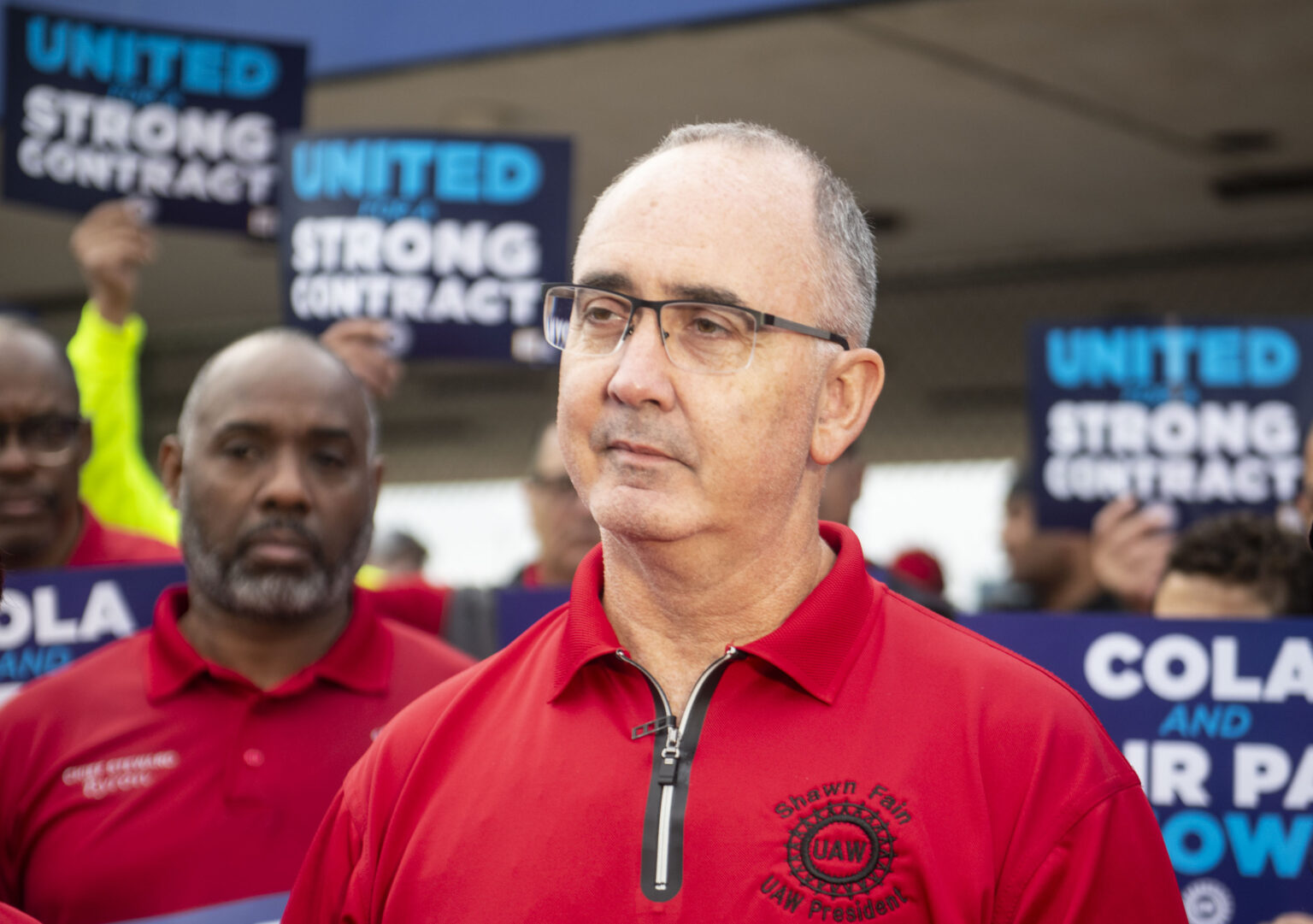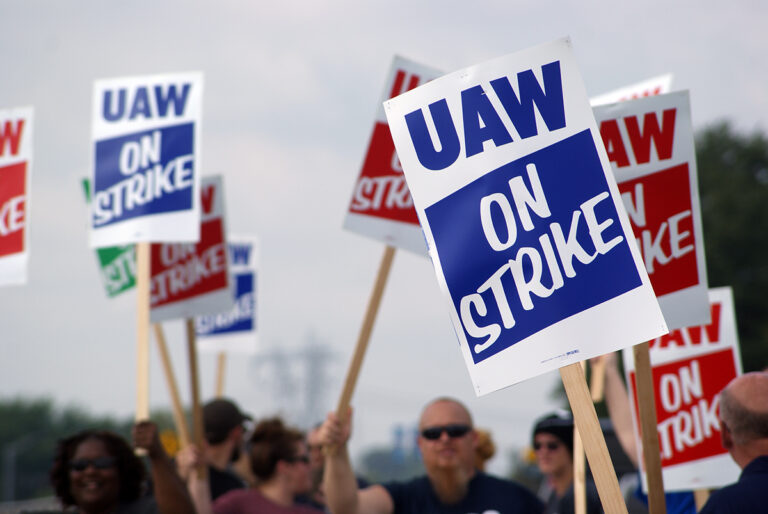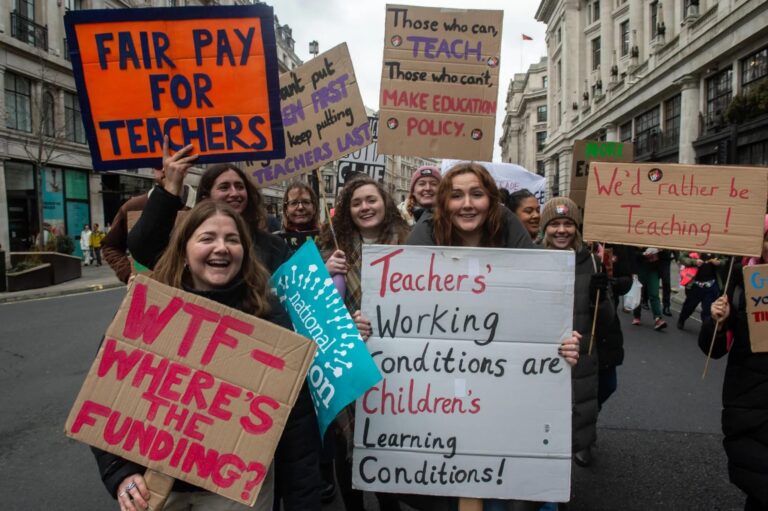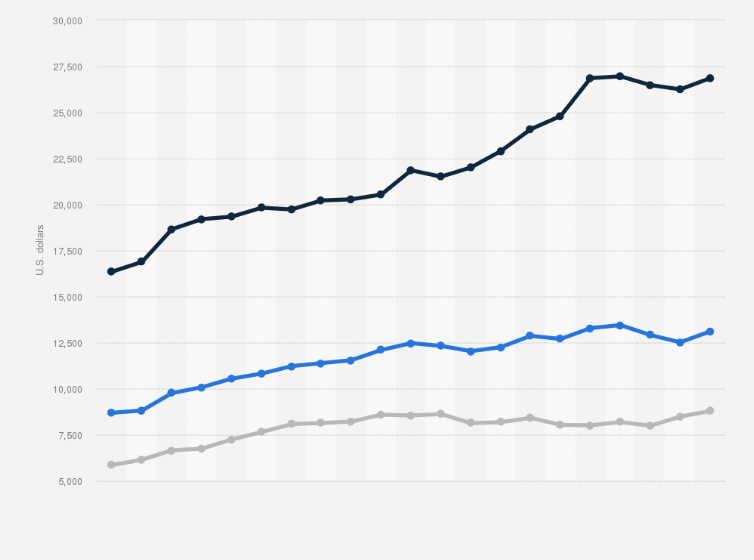
What Affect do Union Disputes and Strikes Have on the Stock Market? An In-Depth Retrospective
History of Labor Disputes’ affect on the US Stock Market and economy as a whole – short term and long term (research links below).
In a historic move, the United Auto Workers (UAW) union has launched its first simultaneous strike against the Detroit Three automakers – General Motors, Ford, and Stellantis (formerly Fiat Chrysler). This labor action, targeting all three companies simultaneously, marks a significant milestone in the ongoing contract negotiations between the union and the automakers.

Why it Matters:
The UAW’s decision to stage a simultaneous strike demonstrates the union’s determination to secure fair agreements for its members. With tens of thousands of auto workers on picket lines across the country, production at various assembly plants has come to a halt, impacting the output of profitable vehicles.
The Detroit Three automakers are facing immense pressure as this labor strike disrupts their operations. With demand for electric vehicles and midsize pickups on the rise, these companies cannot afford prolonged plant closures. The strike also poses a challenge to foreign automakers with assembly plants in the United States, as they depend on the same supply chains.
The UAW’s simultaneous strike grants maximum leverage to the union negotiators, as it forces the automakers into contingency mode. While the strike fund provides some financial support for union workers in the form of week in strike pay, its primary purpose is to add pressure on the companies to come to a fair agreement.
As the strike continues, union leaders and company executives are engaged in intense contract talks, negotiating issues such as wage increases, job security, health benefits, and structural decisions to ensure the welfare of auto workers. The success of these negotiations will determine whether the strike concludes with a fair contract for the UAW members and sets a precedent for future labor contracts in the auto industry.

History of Labor Disputes’ affect on the US Stock Market and economy as a whole – short term and long term (research links below).

Top workers make $32 and want $47. It might have been considered impossible until the Hot Labor Summer of ’23 saw huge gains for Union negotiations.

Just a few years ago Unions were feared to be “Dead.” Why do they seem unstoppable now?
The auto workers strike in 2023 has brought to light a critical battle over the future of the auto industry. At the heart of this strike is the United Auto Workers’ (UAW) desire to organize workers in electric vehicle plants. The UAW believes that organizing these workers is crucial to ensuring job security and fair treatment in the rapidly changing landscape of the auto industry.
This strike has significant implications for both the political constituency and the broader economy. Auto workers are a key voting bloc, and their demands for better wages, benefits, and job protections carry weight in political circles. Additionally, the economic ripple effects of the strike can be substantial, with plant closures and disruptions to the supply chain potentially impacting the entire industry.
The strike also raises questions about the industry’s shift to electric vehicles. As auto companies invest billions of dollars in developing and producing electric vehicles, the UAW sees an opportunity to secure better contracts and protections for its members. However, the strike poses complications for this transition, as companies may struggle to meet production targets and maintain profit margins while grappling with labor disputes.
In summary, the auto workers strike in 2023 goes beyond wage increases and benefits. It highlights the importance of the UAW’s role in shaping the future of the auto industry, the potential impact on the political landscape, and the challenges that the industry faces as it moves towards electric vehicles.
Auto Worker Wages: Top workers currently get an average of $28/hr and want $39/hr (40% increase).
Currently, auto workers are facing challenges with their wage structure, leading them to demand significant wage increases. The current wage structure for auto workers in the industry involves tiered wages, where new hires receive lower hourly wages compared to more seasoned employees. This system has been implemented to reduce labor costs and increase the competitiveness of auto companies.
However, this wage structure has led to frustration among auto workers, as they struggle to afford the very cars they are producing. Many workers find it difficult to make ends meet and provide for their families on their current wages. This situation has created a sense of dissatisfaction and urgency among auto workers, prompting them to demand higher wages.
The demands for wage increases stem from the workers’ desire for fair compensation that reflects the value of their labor. They argue that their efforts contribute significantly to the profitability of auto companies, and therefore, they should be able to share in the success of the industry.
By pushing for wage increases, auto workers aim to address the frustration of not being able to afford the cars they build, thereby seeking a fairer and more equitable wage structure. They hope that better wages will provide them with a decent standard of living and allow them to support their families without financial strain.
Another important demand was the elimination of the two-tiered pay system. The UAW sought to ensure that all auto workers, regardless of their seniority or classification, receive equal pay for equal work. This was seen as a crucial step towards achieving fairness and equality within the industry.
Additionally, the union pressed for more paid time off for its members. They argued that workers deserved an adequate amount of time to rest and recharge, as well as spend quality time with their families.
Job protections were also a key request from the UAW. The union aimed to secure measures that would safeguard the employment of the auto workers amidst technological advancements, such as the rise of electric vehicles.
Additionally, the UAW emphasized the importance of traditional defined-benefit pensions. They sought to secure these pensions, which provide long-term financial security for retired workers, rather than relying solely on individual retirement savings plans.
Overall, the demands of the UAW in the 2023 auto workers strike revolved around securing fair wages, eliminating pay disparities, providing adequate time off, protecting job security, and ensuring reliable defined-benefit pensions for its members.
Shawn Fain, the current president of the United Auto Workers (UAW), is a prominent figure in the auto workers’ strike of 2023. Fain’s rise to power within the UAW involved years of dedication and advocacy for workers’ rights. With a background as an auto worker himself, Fain understands the challenges and struggles faced by this vital workforce.
During his campaign for UAW president, Fain made several promises to the auto workers. One of his main focuses was addressing the issue of tiered wages, vowing to fight for equal pay for all workers within the industry. Fain recognized the importance of fair compensation and understood that the current wage structure posed a significant burden on the workers and their families.
In negotiations with the major car companies, Fain emphasized the necessity of a fair agreement that would benefit both the workers and the industry as a whole. He advocated for historic wage increases and job security measures to ensure the welfare of the auto workers. Fain’s approach involved leveraging the union’s collective power to maximize their influence and secure a fair contract.
As the strike continued, Fain remained committed to achieving a fair agreement for the auto workers. His strong leadership and unwavering dedication to their cause have played a crucial role in the ongoing negotiations between the UAW and the auto companies. Throughout this process, Fain continues to fight for the rights and well-being of the union workers.
With the auto workers’ overall dispute in 2023 reaching its second week, the United Auto Workers (UAW) union and the Detroit Three automakers are now in contingency mode. The strike, which started at the Michigan Assembly Plant, has caused major disruptions in the auto industry, resulting in plant closures and billions of dollars in losses. Both sides are now seeking to minimize the impact of the strike while negotiating a fair agreement.
The UAW has activated its strike fund to provide financial support to union workers, who are on limited strike pay while they continue negotiations with the auto companies. The union leaders are utilizing this contingency mode to maintain maximum leverage and pressure during the contract talks, as they push for historic wage increases, job security, and other demands to benefit pension and health benefits. The automakers, on the other hand, are making structural decisions and exploring alternatives to minimize the impact of the strike, such as hiring temporary workers and adjusting production schedules. Both parties are aware of the significant challenges that arise from the strike and are working towards a resolution to end this labor dispute.
During the UAW rolling strike in 2023, several assembly plants across the United States experienced disruptions as workers went on strike. The strike primarily affected workers who were part of the United Auto Workers (UAW) union.
Various plants participated in the strike, including the Michigan Assembly Plant in Detroit, which is known for producing popular vehicles like pickup trucks. This strategic location helped maximize the union’s leverage during contract negotiations. Additionally, other assembly plants of the Detroit Three (Ford Motor Company, General Motors, and Stellantis) and selected foreign automakers were also affected.
The strike impacted a wide range of workers and positions within these plants. Skilled and unskilled autoworkers, temporary workers, and even some positions in management were involved. The UAW aimed to secure a fair agreement by demanding historic wage increases, improved job security, and comprehensive health benefits.
These strikes had significant implications for the auto production in the United States. The disruption resulted in delayed deliveries and reduced production capacity, affecting the profitability of auto companies. Despite the companies’ contingency measures, such as plant closures and hiring temporary replacement workers, the strikes had a considerable impact on the industry.
The UAW rolling strike demonstrated the collective bargaining power of labor unions in influencing structural decisions within the auto industry. The workers’ determination and solidarity paved the way for negotiations, ultimately leading to a fair contract that addressed their demands and concerns.
During the 2023 UAW strike, several plants went on strike across the United States, including:
1. GM Wentzville Assembly Plant: Located in Wentzville, Missouri,It produces popular vehicles such as the Chevrolet Colorado and Express, as well as the GMC Canyon and Savana.
2. Ford Michigan Assembly Plant: Situated in Detroit, Michigan, this plant is known for producing the iconic Ford Ranger. It also manufactures the highly anticipated Ford Bronco. The UAW members at this plant joined the strike, contributing to the collective effort for improved labor conditions.
3. Stellantis Jeep Assembly Plant: Located in Toledo, Ohio
These plants going on strike had a substantial impact on auto production in the United States. The UAW’s strategic targeting of these key assembly plants, along with others, demonstrated their commitment to achieving a fair agreement with the auto companies. The strike aimed to secure historic wage increases, improved job security, and comprehensive health benefits for all workers involved.
During the auto workers strike of 2023, various workers and positions across different assembly plants were involved in the strike. Union workers, including those from the United Auto Workers (UAW) union, participated in the strike to demand improved labor conditions and fair contracts. These workers included assembly line workers, skilled technicians, maintenance personnel, and other crucial roles within the automotive industry. The strike involved both permanent and temporary workers, as well as workers from the Detroit Three (Ford, General Motors, and Stellantis) and other foreign automakers. The goal of the strike was to secure better wages, job security, health benefits, and fair agreements for all workers. Such collective action aimed to bring attention to the challenges faced by auto workers and negotiate for a more favorable and just work environment.
The 2023 auto workers strike brought the industry to a standstill as the United Auto Workers (UAW) union pushed for a fair agreement with the Detroit Three auto companies. After weeks of negotiations, the UAW and the auto companies reached an agreement that was hailed as the most generous offer in 80 years. This historic deal included significant wage increases, job protections, and other benefits for the union workers. The agreement also addressed key demands such as the elimination of the two-tiered pay system and the provision of more paid time off. Additionally, the UAW sought to secure traditional defined-benefit pensions for its members, ensuring long-term financial security. With this groundbreaking agreement, the auto industry took a major step towards achieving fairness and equity for its workers.
Peter Berg, a professor of employment relations and director of the School of Human Resources and Labor Relations in Michigan State University’s College of Social Science, provides insight on where the negotiations currently stand. Berg shares the implications of what an agreement, or failure to reach an agreement by yesterday’s deadline could mean.
Tom Krisher at Reuters forecasted this moment several months ago (June 16, 2023).”New UAW President Shawn Fain issues strongest warning yet about strikes against 3 Detroit automakers”
The 2023 UAW strike has caused significant economic impacts on both the automakers and the overall economy. With estimates suggesting that the strike could cost automakers billions of dollars, the potential harm to the economy is a cause for concern.
The financial costs for the automakers due to the strike are substantial. After just 10 days, it is estimated that the Detroit Three automakers alone could face a collective loss of around $5 billion. Additionally, the ongoing halt in production could result in a cost of $400 million to $500 million per week for the companies.
The impact of the strike on the economy extends beyond just the automakers. The removal of millions of dollars in wages for the affected auto workers has a direct impact on local economies and consumer spending. Furthermore, the potential billion-dollar loss for the three automakers further amplifies the overall economic repercussions.
As negotiations continue between the United Auto Workers (UAW) and the automakers, the outcome of the strike remains uncertain. However, it is crucial for both parties to reach a fair agreement quickly to mitigate further harm to the economy. The longer the strike persists, the greater the potential damage to not only the automakers but also the broader economy as a whole.

The United Auto Workers (UAW) strike has raised concerns about potential cost hikes in the automotive industry. The UAW, representing nearly 50,000 auto workers, has made several demands to address issues such as job security, wage increases, and health benefits.
The automakers, including Ford, General Motors, and Chrysler, have responded to these demands with varying degrees of willingness to negotiate. However, discussions have been challenging, and a fair agreement is yet to be reached.
One of the main fears associated with the strike is the potential for significant cost increases for the automakers. With production halted, the loss in revenue coupled with ongoing wage payments to striking workers puts significant financial pressure on the companies. This pressure could lead to price hikes in vehicles to compensate for the losses experienced during the strike.
The effects of these potential cost hikes extend beyond just the automakers. Suppliers, dealerships, and other sectors dependent on the automotive industry could also be impacted. Price increases on parts and vehicles could lead to overall inflation and reduced consumer demand, affecting local economies and employment rates.
As negotiations continue between the UAW and the automakers, the cost hike fears loom large. Finding a middle ground that includes fair wages and benefits while also ensuring the sustainability and profitability of the auto industry is crucial. Both parties must work towards a resolution that minimizes the financial impact on the automakers and other sectors, ensuring a healthy and sustainable automotive industry for all stakeholders involved.
The UAW strike and its demands have the potential to significantly impact foreign automakers operating in the United States. As the strike continues, foreign automakers may face challenges and potential cost increases in the U.S. market.
With the strike affecting the operations of major American automakers such as Ford, GM, and Chrysler, foreign automakers could face disruptions in the supply chain, affecting their ability to produce vehicles. This could lead to delays in production and potential plant closures for foreign automakers in the U.S.
Furthermore, the UAW’s demands for wage increases and improved job security could also have financial implications for foreign automakers. These demands could lead to higher labor costs, squeezing profit margins for foreign companies. Implementing historic wage increases and meeting other union demands could be a significant financial burden for foreign automakers operating in the U.S.
Additionally, as the strike continues, there may be shifts in consumer demand and overall economic conditions. Price increases on vehicles due to the strike could potentially decrease consumer demand, affecting the sales of foreign automakers in the U.S. market.
Foreign automakers will need to carefully navigate these challenges and potential cost increases as the UAW strike continues. Balancing the demands of the UAW while maintaining profitability in a competitive market will require strategic decision-making and potentially restructuring operations to mitigate the impact of the strike on their business.
The last UAW strike against GM, which took place in 2019, had significant repercussions for both the company and the broader Michigan economy. The strike lasted for 40 days, making it the longest automotive strike in over 50 years. Approximately 48,000 UAW workers participated in the strike, causing disruptions in GM’s production and delivery.
During the strike, GM had to shut down 33 manufacturing plants across the United States, leading to a halt in production for popular vehicles such as the Chevrolet Silverado and GMC Sierra pickup trucks. The strike also impacted the delivery of vehicles, resulting in a decrease in inventory for GM dealerships.
The economic consequences of the strike were significant. GM estimated that the strike resulted in a loss of around $2 billion in profits. Additionally, the strike’s impact extended beyond GM, affecting the broader Michigan economy. Many businesses that relied on the automaker’s production, such as suppliers and local restaurants, experienced a decline in revenue during the strike.
The last UAW strike against GM in 2019 showcased the union’s ability to disrupt production and impact the financial performance of automotive companies. It also highlighted the importance of reaching a fair agreement through collective bargaining to avoid future labor disputes that could have far-reaching economic implications.

WorkforceWise.org, All Rights Reserved.